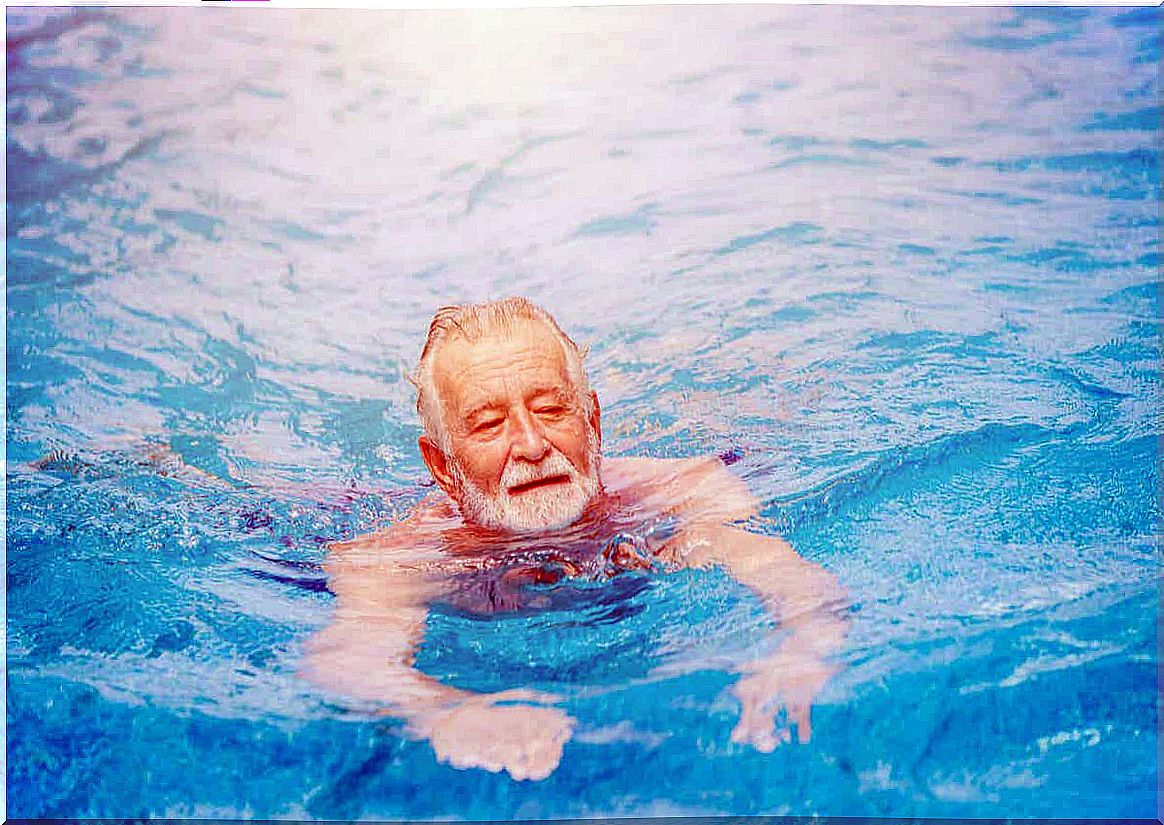A Recommended Training Plan For The Elderly

There is a recommended exercise plan for the elderly. In fact, the World Health Organization and the Centers for Disease Control and Prevention recommend an average of 150 minutes of aerobic activity per week for the elderly.
Despite this, very few reach the standard. Therefore, it is urgent to develop an exercise plan for the elderly.
As the body ages, a number of physiological and morphological changes take place, which can impair life after the age of 65. Although this process cannot be stopped, we can develop a number of habits that contribute to what is called active aging. Exercise is part of these habits.
It is crucial to ensure the health of the elderly person at this stage that a plan is drawn up that follows the person’s age, physical condition and interests. The plan we present today is of great help in ensuring cognitive and physical vitality.
Always remember your state of health
Before implementing an exercise plan for the elderly, it is advisable to assess your physical condition. As we get older, the body is exposed to conditions that limit the amount of activity that can be performed during the day.
Some of the most common are the following:
- Pain in the back and neck.
- Osteoarthritis.
- Dementia.
- Parkinson’s disease.
- Heart disease.
- Obesity.
- Diabetes.
Old age can also lead to what is known as a geriatric syndrome, which promotes fragility. Therefore , a physician should conduct a general examination of the elderly person’s physical condition to avoid complications during the activity.
Although the recommendation is 150 minutes of aerobic activity, the training plan for the elderly does not need to be performed as 30 consecutive minutes, five times a week.
The important thing is to reach the goal of 150 minutes per week, with minimum activity periods of 10 minutes. In other words, seniors can perform three sessions of 10 minutes during the day to meet the recommendations.
Recommended training plan for the elderly
Some physical activity in old age is better than none at all. But the larger the scope, the more effective the benefits.
In addition, some exercises are more suitable for the elderly as they reduce the risk of falls, improve balance, mobility and stability.
walk
For as long as possible, doctors recommend walking at medium and high intensity in any exercise plan for adults over 60 years of age. Several studies and research have reported on the benefits of old age, ranging from stronger muscles and improved aerobic capacity to balance and equilibrium.
The person’s physical condition must be taken into account when including time in the program, although an average of 30-90 minutes per week is beneficial.
The elderly person should go under the supervision of another person if there is a past with decline or imbalance. The pace should increase as the weeks progress.

Doctors especially recommend a very popular variant among older adults: Seated yoga. This workout modifies the asanas and adapts them so that they can be performed seated. It is therefore perfect for adults who have balance problems, back pain, dizziness or poor flexibility.
Although the intensity of sitting yoga is lower than traditional yoga, there is much to suggest that it is helpful in improving the quality of life and physical endurance of the elderly.
They can complete routines once a week for an hour, holding each position for 15 seconds. Ideally, they should combine it with meditation and breathing exercises.
Exercise plan for the elderly: Water aerobics
Vanda aerobics is another discipline that is often used in rehabilitation and which can be included in an exercise plan for the elderly. Specialists have documented its benefits and it is a perfect activity if you are overweight, suffering from joint or back pain.
In this case, it is best to follow complete programs of 12 or 14 weeks, always with the mediation of a qualified instructor. Group training can also strengthen social relationships and prevent loneliness in this phase of life.
Some of the exercises that are included are underwater walking, leg lifts and arm lifts. Water provides a natural resistance, which replaces the use of weights and reduces the strain on muscles and joints.
Pilates for the elderly
This is a variant of the traditional Pilates exercises, where the intensity of the exercises is partially changed. It is common for most of the movements to be performed with elastics and special balls. It is recommended to sign up for a course taught by a professional so that the movements are adapted to the age.
Research suggests that Pilates is useful for improving static and dynamic balance, reducing the risk of falling, strengthening psychological well-being, and improving mobility and posture in older adults.
Intense dance
There is evidence that dancing, regardless of type, is recommended to improve strength, muscle endurance and balance. These are three characteristics that gradually deteriorate as we get older. Best of all, it is an activity that is not perceived as exercise.
Because of this, dance should be included in any training plan for the elderly, as long as one chooses musical styles that are appealing. It is an activity that the elderly can perform at home, without equipment and in little space.
Functional exercises
Functional exercises are exercises that involve different muscles to improve balance, posture and endurance. Researchers have studied how routines based on them are beneficial for older people, whether performed with moderate or low intensity.
Changes in pace, direction, level and space allow for working with the upper and lower body in a single routine and can be performed at home with little or no equipment. Some of the best are as follows:
- Leg lift.
- Squats on chair.
- Arm raises.
- Arm stretches with weights.
- Oblique arm bends.
- Rotation of the hip.
- Training with resistance bands.
If there is no motivation to train in the form of routines, you can always include activities during the week that require some mobility. The following is an example of this:
- Gardening.
- Vacuuming the house.
- Thorough cleaning.
- Go to the store instead of taking the car.
- Go down and up stairs whenever possible.
- Walk the dog.

The importance of muscle and endurance in old age
When one turns 60, a mechanism occurs in the human body called sarcopenia. Experts say that its causes are multifunctional and that its consequences can change the quality of life and increase the degree of dependence on others.
In short, it consists of loss of muscle mass. This begins to manifest itself from the age of 30 years. However, it is not until the age of 60 that it accelerates to dangerous levels. It can not be completely avoided, but exercise and a balanced diet are a help.
This is one of the primary reasons to include an exercise plan for the elderly. Not to mention the other benefits:
- It reduces cardiovascular complications : Research indicates that 150-300 minutes of aerobic and anaerobic activity helps prevent cardiovascular complications.
- It controls high blood pressure : High blood pressure is one of the leading causes of premature death in the world. We know that regular exercise is a means of controlling it without replacing the use of conventional medicine.
- It is a treatment for type 2 diabetes : it has been shown that physical activity serves as a metabolic control in patients suffering from this condition. Together with pharmacological treatment and a balanced diet, it helps to improve the quality of life after the age of 60.
- It helps strengthen cognition : This includes improved memory skills and brain function. It also has an impact on psychological well-being as opposed to a sedentary lifestyle, studies show.
- It improves strength and balance, which are two elements that we gradually lose as we get older. Researchers have documented that a training plan for the elderly provides significant improvements in these two criteria.
An exercise plan for the elderly
These and other reasons mentioned throughout the article are a good justification for the importance of exercise in old age. Although the first few sessions can be difficult for the participants, it is only a matter of time before the basic movements become a habit!









